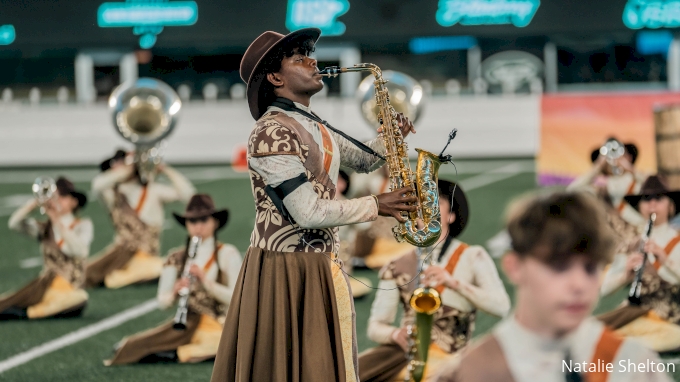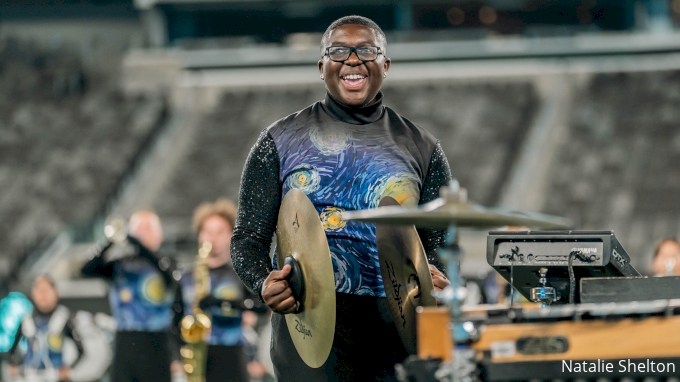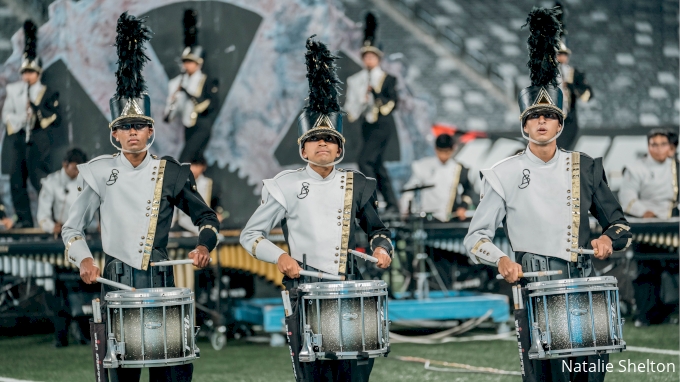5 Instruments Marching Beginners Should Try
5 Instruments Marching Beginners Should Try
New to marching band and not sure what to play? The experts over at FloMarching have compiled a list of 5 instruments marching band beginners should try!

New to marching band and not sure what to play? Well, you're in luck! The experts over at FloMarching have compiled a list of five instruments we think marching band beginners should try with a list of pros and cons underneath
1. Flute
The flute is a fantastic instrument for those who are brand new to marching band and looking to actually march in the ensemble. Marching the flute comes with many advantages, the biggest one being that it's light and easy to carry around. Because flute is a very popular instrument for marching band, you'll also have a group of people around you to listen to and make sure you're playing the correct music and the right time.
Pros:
- Lightweight and mobile
- Easy to transport and march with
- Typically plays melody parts
Cons:
- Can be difficult initially to make sounds on
- Music can be confusing to read depending on the octave

2. Marimba/Piano
If you want to join marching band but don't want to actually march on the field, you'll probably want to look into playing in the front ensemble. Piano (or synthesizer) is a great option that many of us grew up playing, so the learning curve would be little to none if you have prior experience. For those who are familiar with playing the piano but may want a bit more of a challenge, look into the marimba! The two instruments have a lot of overlap, so while there will be a bit of a learning curve, it will definitely allow musicians to focus on reading music while learning basic percussion playing techniques.
Pros:
- Non-marching
- Relatively small learning curve
Cons:
- Can't easily practice at home
- Heavy and have lots of moving parts
- Can't play if it's raining

3. Saxophone
If you were to scour the internet looking for "the easiest marching band instrument to play," you'd likely see the saxophone on the list. Saxophone is a great beginner marching instrument because it's easy to make a sound on and comes in a variety of "sizes" (alto, tenor, bari) so each student is likely to find a saxophone iteration that suits them and their height/weight.
Pros:
- Fairly lightweight and easy to transport/march with (excluding the bari sax)
- Easy to make a sound on
- Typically plays melody parts
Cons:
- Require students to purchase reeds on a routine basis, which adds an additional cost
- Saxophone parts have the possibility of being a bit more difficult for beginners to play

4. Auxiliary Percussion
Another option for students who can't/don't want to march and who may be brand new to reading music would be auxiliary percussion. What exactly does that mean, though? Well, auxiliary percussion students are responsible for playing multiple "specialized" instruments that typically only have a handful of notes stretched throughout the show. Instruments you may be responsible for playing include tambourine, triangle, cymbals, slapstick, break drums, and much more. Auxiliary percussion is a fun option that allows young musicians to play many different kinds of instruments and learn many different, new percussion techniques.
Pros:
- Non-marching
- Great introduction to many different kinds of percussion instruments
Cons:
- Can't easily practice at home
- Will have soloist musical responsibilities, as there is typically only one auxiliary percussionist
- Music can be difficult to read

5. Snare Drum
For the student who wants to play a percussion instrument but is interested in marching instead of staying in the front ensemble, we recommend playing the snare drum. Drum technique, while difficult to master, is easy to pick up and understand right off the bat. Snare drummers also have the perk of having one of the lighter marching percussion instruments, so even smaller students should be able to find a snare drum and harness setup that fits their height/weight.
Pros:
- One of the lighter marching percussion instruments
- Helps develop hand/eye coordination
Cons:
- Requires learning separate marching technique than woodwinds/brass players
- Can cause some shoulder/back strain from wearing the harness and drum for prolonged periods of time
- Requires students to purchase drum sticks on a routine basis, which adds an additional cost
And there you have it! At the end of the day, it's important to remember that the "easiest" instrument may not always be the best instrument for a student to play. Picking an instrument that a student actually wants to play will help keep them interested in participating in marching band, while allowing them to grow as a musician and make some life-long friends along the way.

BONUS OPTION: Color Guard
Want to participate in marching band but don't want to play an instrument? You may want to consider joining the color guard! Whether you're interested in learning how to spin or upping your dance technique, the color guard is a great option for students looking to improve their hand-eye coordination, add to the overall visual package of a marching band show, and get some exercise.
